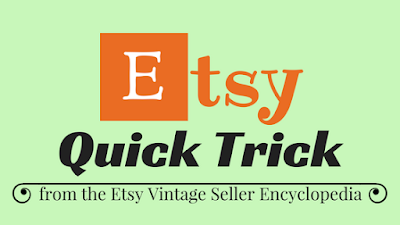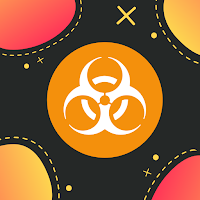The opening paragraph of your item description is crucial. It is both a science and an art.
First the science: your description should clearly inform the AI (artificial intelligence) algorithm*:
First the science: your description should clearly inform the AI (artificial intelligence) algorithm*:
- what is for sale
- context for which the item is appropriate (example: "shower" ... is it wedding or bathroom? See "LSI" at the bottom.)
- type of query for which your item would be a good response
Craft your opening paragraph to match as many factors in the search query as possible. You must know your target market.
At the same time, your opening paragraph must engage your viewer, converting them into a buyer. Search engines and Etsy love a great conversion rate.
 |
| Catching buyers |
Use your persuasive ability to market your product. Use a writing style and terminology that are comfortable for your target audience.
If you capture the attention of viewers in the first few sentences, they will continue to read the page. They will see all the interesting details you have provided that will convince them to buy.
If you fail to engage your shopper, they will never see the
rest of what you have written. Instead they will leave the page, bouncing to
another listing in another shop 😟.
How long should product descriptions be?
One school of thought is to keep listings brief. Use short paragraphs (even one sentence). Use bullet points. After all, users of smart phones have that small screen.
Yet some guidance is saying to aim for 2000 words. Say what? Supposedly descriptions of that length are ranked better by search engines. (This is taken from advice that is directed to websites and blogs as well as selling websites. Note that even my most complicated my blog posts are not that long, let alone item descriptions...)
Which is best? Use the amount of text that is best for your target customer base. Higher quality writing can be a tool to make your products sound more appealing than your competitors’. And longer descriptions take longer to read, which pleases search engines.
Use longer descriptions for items that are extra interesting, have a backstory, or are ultra competitive. What will work best to engage buyers?
It can be difficult to provide long descriptions that are meaningful. Share some interesting or amusing details about the item. Educational facts are fine. But customers love reading short stories just as much.
Give it a try on a few listings. Craft longer descriptions for pricier
items. Save the short and brief ones for low-end stuff. Mix it up. Observe if anything changes.
Insert a link to more items. Most websites try to keep you in their store by linking you to their "latest" items or picks "just for" their shoppers. That tactic works for online vintage sellers, too.
Insert a link to more items. Most websites try to keep you in their store by linking you to their "latest" items or picks "just for" their shoppers. That tactic works for online vintage sellers, too.
Can I use boilerplate in my listings?
Boilerplate is repeating the same block of text in each
listing. The short answer is "no." There are many reasons. Item descriptions should be just that, descriptions. It should not be returns or shipping information.
Some feel that the very end of a long description could contain some repetitive material, so you could try that... But put your shipping and return information in your shop policies where they belong.
Admin: we recommend using your keywords as naturally as possible throughout your item description because Google does not like unnatural keyword use. Therefore, describe your product in a thorough and accurate way to give yourself the best shot at ranking well in Google.
Some feel that the very end of a long description could contain some repetitive material, so you could try that... But put your shipping and return information in your shop policies where they belong.
How to incorporate title words in item descriptions
From Etsy admin in 2016:
Q: Is it better to copy & paste your title at the start of the description, or to sprinkle the keywords from your title conversationally into the first few sentences?
Q: Is it better to copy & paste your title at the start of the description, or to sprinkle the keywords from your title conversationally into the first few sentences?
Admin: we recommend using your keywords as naturally as possible throughout your item description because Google does not like unnatural keyword use. Therefore, describe your product in a thorough and accurate way to give yourself the best shot at ranking well in Google.
The importance of natural wording
Search engines do prefer natural wording. That is not the only reason to use it...
Consider the increasing importance of voice search. Many people now own and use Alexa or Google Voice.
(So artificial Intelligence is already here. It is in fact helping people to find what they are looking for online.)
(So artificial Intelligence is already here. It is in fact helping people to find what they are looking for online.)
Users of this technology speak their search terms. If necessary, they refine their query. They tell the device what they want, using natural spoken English language (in the USA). The words used are "LSI keywords" in SEO-speak.
Do item descriptions really matter?
*NOTE: Etsy does not use item descriptions in search right now. But indications are that they could begin to use them. For now, the algorithms referred to are only for outside searches by search engines. But that could change. Part of the goal of this blog post is to make you aware of possible changes in the Etsy pipeline.
Extra credit:
What are LSI keywords?
The terms you use give clues to the search engines what your item is. Even better, those terms lead searchers to your items.
Search engines look for topic and context rather than exact words. Real people do too. So write content for real people.











